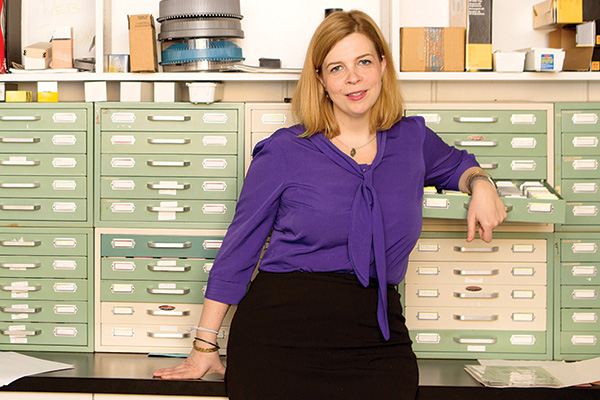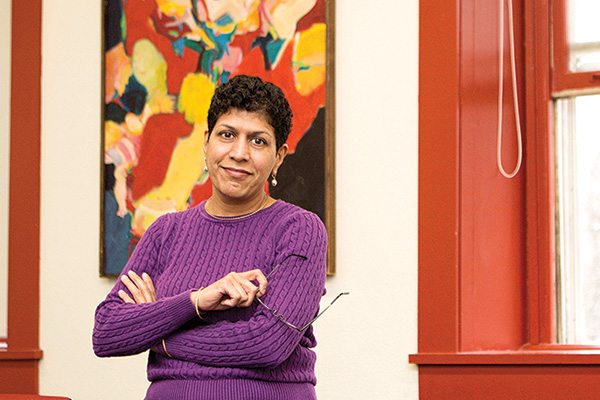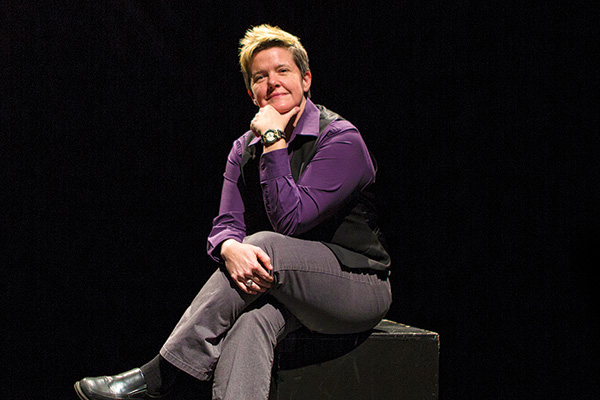Discovery through guided inquiry
Two groups of students sit at tables, their physical chemistry activities books open before them. Each student has a role: manager, reader, or recorder. Today, they’re studying the properties of the hydrogen atom, the most basic building block in the universe.
 One student offers a smooth, confident answer to a question in the activity book. He presents it to the group. The other students look at his work, and then look at their own work. Their answers are not the same.
One student offers a smooth, confident answer to a question in the activity book. He presents it to the group. The other students look at his work, and then look at their own work. Their answers are not the same.
“How did you get that?” one of them says, pointing at the formula the first student has scrawled in the activity book. The third student weighs in too. “That shouldn’t be a positive number, that should be a negative number. It has to be!”
Together, they work backwards on the question. The first student, initially so confident of his work, is the first to discover the mistake. He points to the formula.
“I put that outside the parentheses,” he admits. “That should be inside. Changing it makes it a negative number.”
Problem solved. They move onto the next one.
Throughout the exchange, associate professor Craig Teague is listening, focused on the back and forth. With the issue resolved by the students, he drifts to the other group to monitor the conversation they’re having.
“It’s a way of teaching that engages all the students in the learning process,” Teague says. “It’s based on the concept of guided inquiry, a learning cycle of exploration, concept invention, and application.”
In the guided inquiry method, activities focus on core concepts and encourage a deep understanding of the course material while developing higher-order thinking skills.
“It’s about asking questions in a controlled way,” he says. “I’m really focused on an active-learning methodology that forces them to ask, ‘why is this concept connected to this other concept?’ or ‘why is the material presented this way?’”
Teague developed his teaching technique using the principles of Process Oriented Guided Inquiry Learning (POGIL), which began appearing in college chemistry courses about 1994.
“Chemistry is very content driven,” Teague says. “There is an accepted body of knowledge that chemistry students are expected to master. This technique delivers that body of knowledge in a different way. Students discover the material themselves through talking, listening, and collaborating as they work through the group activities. Oftentimes, a student learns more about a concept by explaining it to someone else. You can see when someone ‘gets it’.”
Craig Teague
Associate Professor of Chemistry
While the POGIL technique has become a popular approach to teaching chemistry and other science, technology, engineering, and math (STEM) courses, Teague, who has been active at the national level with the POGIL Project, is pleased with how well it works within Cornell’s One Course At A Time curriculum.
“One Course At A Time is very conducive to this way of learning,” he says. “The students finish the course with a very deep understanding of the concepts they’ve learned.
“One big advantage we have with One Course is we don’t have to end the class after 50 minutes. I can teach the subject matter without having to keep one eye on the clock. If the group is having difficulty, we can slow down and review the difficult material.”
Teague says this approach is very different from lecturing in a 300-seat lecture hall.
“When I lectured in that environment as a graduate assistant, I didn’t know what the students were thinking about, or if they were thinking about chemistry at all,” he says. “Now, I can walk around the classroom while the students are discussing a topic or issue and know by the conversation how things are going. If they get confused, I stop the discussion and give a short lecture about the concept with which they’re struggling. Once that’s resolved, it’s back to the group discussions.”
While students are mastering the body of knowledge, they are also developing skills such as critical thinking, problem-solving, and communication by encouraging cooperation and reflection. The end result: students become lifelong learners, which prepares them to be more competitive in a global market.
“I still lecture, but it’s no more than one-fourth to one-third of the class time,” Teague says.
As in most chemistry courses, there is a lab component during which students conduct experiments and record their findings. But even lab periods are different.
Answering the pre-experiment questions is done outside of class. In class, the students talk to their lab partners. This gets them to think about the experiment before they go into the lab, according to Teague.
“Once we’ve decided what we want to test, it’s up to the students to decide how to design and conduct the experiment,” Teague says. “They create what we call ‘appropriate experimental parameters’.”
Even with the emphasis on group work and collaboration, each student is responsible for mastering the material.
“Exams haven’t changed. I still ask them to solve problems and show their work. The vast majority of the grade depends on their mastery of the body of knowledge, as shown by exams, problem sets, and lab reports. With that said, students know I expect them to be good group citizens. That’s a big part of lifelong learning.”
Professor Teague describes his teaching methods in a 90-second Tiny Talk.




